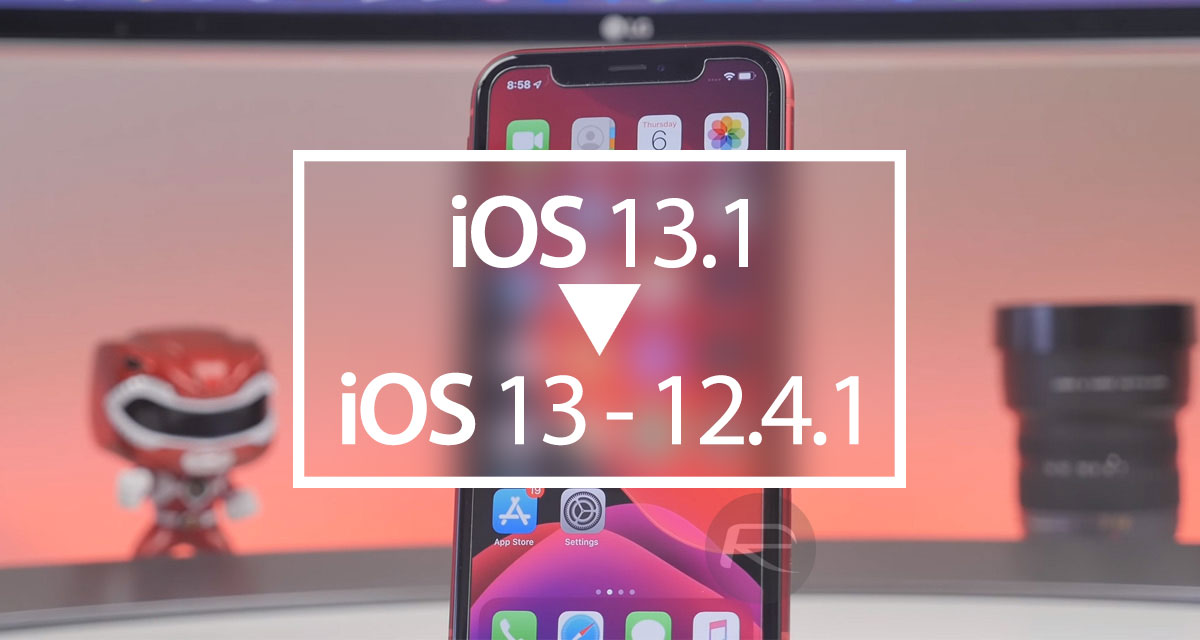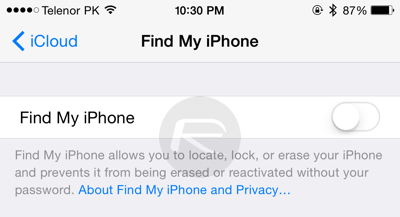Here’s how to downgrade iOS 13.1 final to iOS 12.4.1 or iOS 13.0 on your compatible iPhone model or iPod touch 7th-generation.
If you have taken the opportunity to upgrade your iPhone or iPod touch to iOS 13.1 but have decided that it isn’t for you, then you may want to get yourself back to iOS 12.4.1 or iOS 13.0 as Apple is still currently signing them. Let’s take a look at the process to see how to downgrade.

Step 1: Make sure that you have the latest version of iTunes installed on your PC or Mac. You may have upgraded to iOS 13 via an OTA update but in order to downgrade, you will need a compatible version of iTunes.
Step 2: You will also need to have the correct iOS 12.4.1 or iOS 13.0 IPSW file for your particular device. This means that the file you download will need to have been compiled for the device that you are downgrading. You can grab the iOS 12.4.1 IPSW file from here or the iOS 13.0 IPSW file from here.
Step 3: On the iPhone or the iPod touch, you will need to turn off the Find My iPhone feature in order to be able to downgrade. Head to Settings > iCloud > Find My iPhone and make sure the Find My iPhone switch is set to the Off position. When you are asked to confirm the password for the account, make sure that you enter it successfully in order to proceed.

Step 4: Connect your device to your PC or Mac. iTunes should kick in automatically, but if it doesn’t then fire it up manually. You’re now going to need to put the connected device into DFU or Recovery mode using the instructions below:
- iPhone 8 / 8 Plus, or iPhone X / XR / XS / XS Max / 11 / 11 Pro / 11 Pro Max owners: DFU Mode On iPhone X / 8: Here’s How To Enter It
- iPhone 7 / 7 Plus owners: Enter DFU Mode On iPhone 7 Or iPhone 7 Plus, Here’s How
- If you have an iPhone 6s / 6s Plus, then follow the instructions here.
Now that you have been successful and got the device into DFU Mode, iTunes will kick in and tell you that it has detected that device in Recovery Mode. Your device is now ready to move on to the next part of the process.
Step 5: Press and hold the Option key (Mac), or Shift key (Windows), and make sure that you select the Restore iPhone… option within iTunes. It is important you select that option and don’t choose to update the firmware. When prompted, navigate to the iOS 12.4.1 or iOS 13.0 IPSW file on your computer and select it. This will be, of course, the file that you downloaded earlier.
iTunes will now go to work and restore your device to that iOS 12.4.1 or iOS 13.0 file. Once complete, you will find yourself on the setup screen and ready to get your iPhone back into the swing of things running iOS 12.4.1 or 13.0.
You may also like to check out:
- Best iPhone 11, 11 Pro Max Case With Slim, Wallet, Ultra-Thin Design? Here Are Our Top Picks [List]
- iPhone 11 / 11 Pro Max Screen Protector With Tempered Glass: Here Are The Best Ones
- iOS 13, iPadOS Compatibility For iPhone, iPad, iPod touch Devices
- How To Fix iOS 13 Problems, Crashing Apps Issue And Other Bugs
- Install WhatsApp Web On iPad Thanks To iOS 13 And iPadOS 13.1
- Jailbreak iOS 13 / 13.1 Status Update [Continuously Updated With Latest Info]
- iOS 13.1 Jailbreak Update: Security Content Fixes And Patches Detailed By Apple
- Download: iPadOS 13.1 Final IPSW Link, OTA Update For iPad Pro, iPad Air, iPad mini And More Released
- Download iOS 13.1 IPSW Links & Install On iPhone 11, Pro, XS, Max, XR, X, 8, 7, Plus, 6s, SE, iPod [Tutorial]
You can follow us on Twitter, or Instagram, and even like our Facebook page to keep yourself updated on all the latest from Microsoft, Google, Apple, and the Web.

